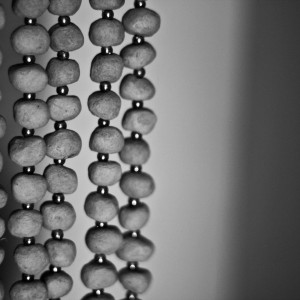
With the prevalence of pattern baldness, hair loss is a reasonably common phenomenon. Moreover many of the current hair restoration options as well as ongoing research is targeted to those with male, and sometimes female, pattern baldness. Despite this there are countless reasons for hair loss including congenital disorders.
Monilethrix, or beaded hair, is an inherited condition whereby strands of hair take on the appearance of beads on a necklace when viewed under a microscope1. This very distinct shape is caused by the diameter of the hair shaft changing throughout the length of the hair. In many cases this is a result of an individual unable to produce proper keratin, the structural protein necessary for forming hair, skin and nails. Therefore, similar to alopecia areata, monilethrix may also lead to abnormalities in the nails. Additional symptoms include sparse hair growth as well as easily breakable short and brittle hair.
Monilethrix is a genetic disease which means it is passed through families. It can be recessive, meaning both parents would have to carry the mutation in order for the disease to appear in their child, or dominant, in which case just one parent with the disease could result in its appearance in the next generation. To confirm the diagnosis, hair is examined microscopically.
The most common treatment recommendations often include avoiding cosmetic damage such as exposure to sunlight, hair dye and heat styling. There has been some success with pharmaceutical treatment however, including use of retinoids2 and minoxidil3. For more information, or individually suited treatment options, please speak with your physician or hair loss expert.
Article by: Dr. J.L. Carviel, PhD, Mediprobe Research Inc.
References
- Zlotogorski A, Marek D, Horev L, Abu A, Ben-Amitai D, Gerad L, et al. An autosomal recessive form of monilethrix is caused by mutations in DSG4: clinical overlap with localized autosomal recessive hypotrichosis. J Invest Dermatol 2006;126:1292–6.
- Karincaoglu Y, Coskun BK, Seyhan ME, Bayram N. Monilethrix: improvement with acitretin. Am J Clin Dermatol 2005;6:407–10.
- Rossi A, Iorio A, Scali E, Fortuna MC, Mari E, Palese E, et al. Monilethrix treated with minoxidil. Int J Immunopathol Pharmacol 2011;24:239–42.












